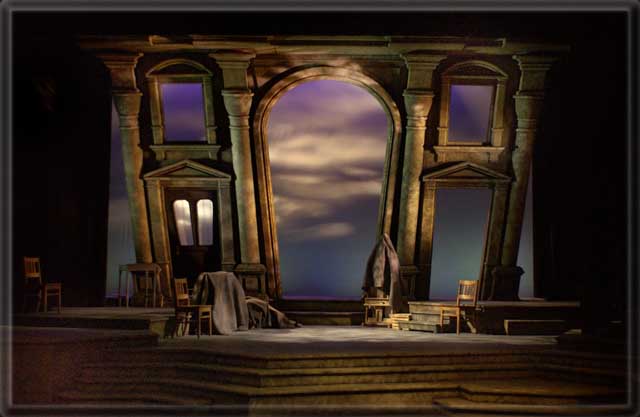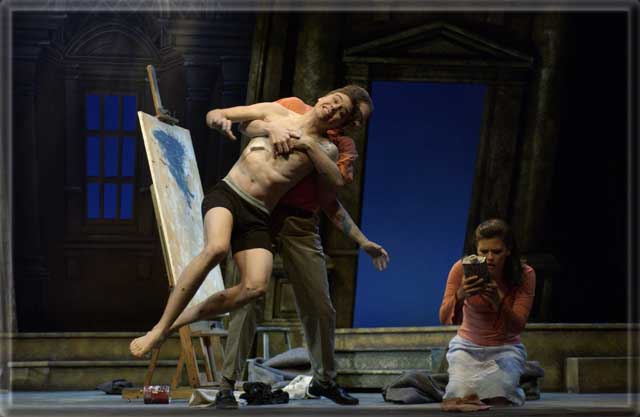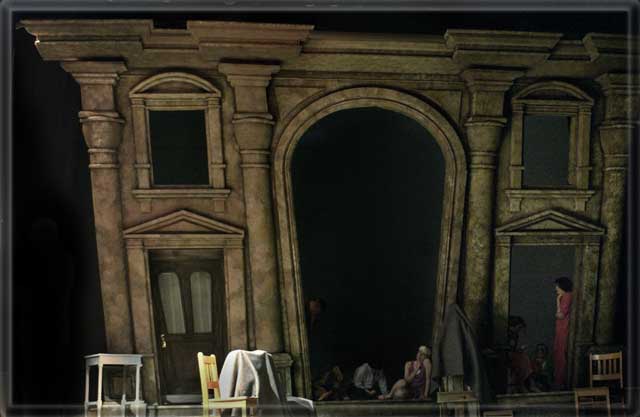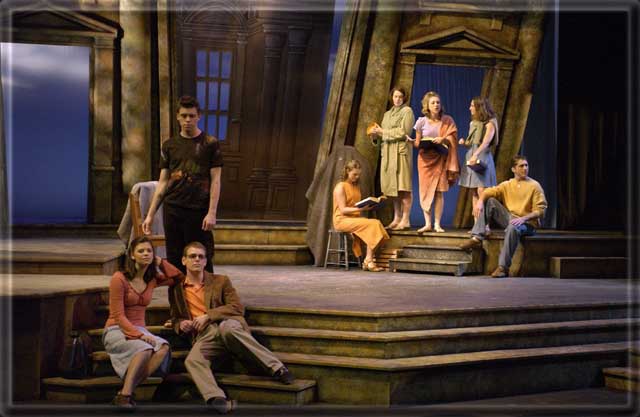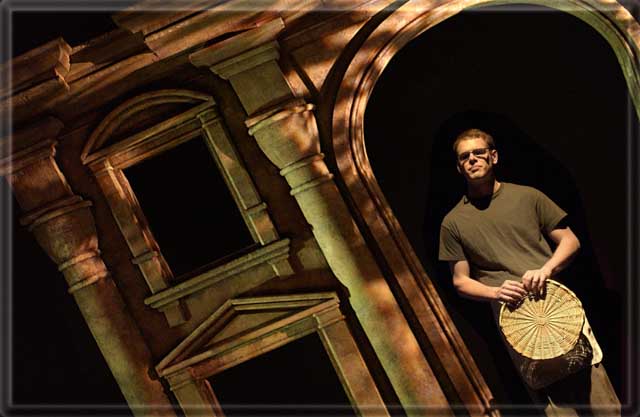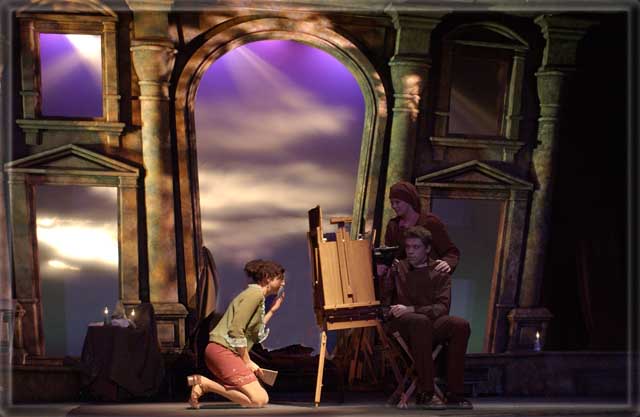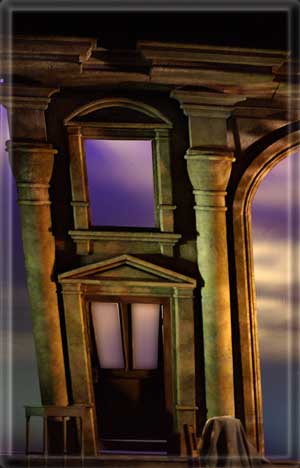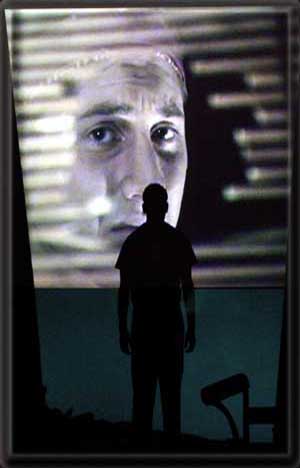|
Chaucer in Rome - by John Guare. Presented by James Madison University in the Fall of 2004. Scenery and Lighting by Richard Finkelstein. Directing by Pam Johnson
Set Description: The setting consists of a main central area with expansive steps leading up from the stage at the rear, and down from the stage in the apron area, with a canal presumably downstage of the downstage steps. On the left and right of the stage are auxiliary areas which are raised up about 2 feet, and there is an auxiliary area downstage left featuring a classical gate. These areas allow for the specific locations of the play to be staged in isolation, or for the stage to be used expansively as a whole. At the rear of the stage is a large Neoclassical facade, fully sculpted as a 3D volume. The unit is built in a 3-point perspective to increase the feel of its looming nature. Furthermore the facade is leaning precariously forward as if at any minute it can squash all those who may embrace it. Through the arch, doorways, and windows we can see the cyc directly, however for some scenes a backdrop backs up the central arch with an interior hallway and window. The drop is done in a classical style like the images of Piranesi. Factors of Conceptualization: Besides being a rather poetic engine for action, enabling us to move effortlessly from scene location to scene location, the setting also reflects how an environment/situation can be all at once, beautiful, inspiring, and also debilitating and deadly. In short the set reflects the dynamic nature of relationships in life itself. Beauty drives us forward though sometimes to our doom. The setting also can alternate at an instant between public space and private space. The monolithic architecture diminishes the scale of the human but it is simultaneously "real" in its mass and volume, while also being an abstraction as is art itself. Beyond the arches, the drop is a further abstraction to the 2D. Lighting: The setting is designed as a light-reactive entity. You can see from the photos how the lighting can expand the sense of depth or shrink it/flatten it. The light is designed to play on the surfaces much as paint does on the canvas of an artist. There is a strong interplay as well between foreground and background elements, and light is designed to permiate the space from beyond. There are clear golden casts to reflect the feel of light in the actual geography. |

